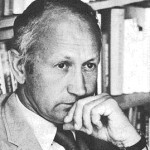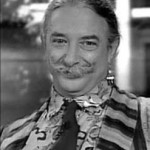What happens in a Laughter Club?
At the clubs we gather together in groups to laugh for no reason; no jokes, no comedy, no humour. The result is a disconnection from needing something ‘out there’ to laugh at; instead, we learn to internalise our ability to laugh so it is available whenever we need it. We engage in simple, playful exercises, making eye contact. If you are willing to at least pretend to laugh you will find the group’s laughter becoming contagious and quite soon, perfectly real.
The laughter exercises are interspersed with deep breathing (this is the Yoga bit) where we get rid of the stale air in the bottom of our lungs and breath in lots of fresh oxygen. Not only does this make us feel energised in mind and body; as Dr Otto Warburg (winner of the Nobel Prize for medicine) said, “Deep breathing techniques increase oxygen to the cells and are the most important factors in living a disease-free and energetic life. When cells get enough oxygen, cancer will not and can not occur.”
Medical research has found that our bodies cannot tell the difference between real and willingly simulated laughter. We get the same health benefits as if the laughter was real. What is important is to laugh energetically (belly-laugh) for about 20 to 30 minutes at a time. This is why we have the Laughter Clubs, as natural laughter comes for only a few seconds here and there, so is not enough to bring about physiological and biochemical changes in our bodies.
When we learn to make our laughter from inside, rather than being dependent on events outside, we find ourselves becoming more cheerful. Indeed you become a nicer person, less likely to get stressed or depressed, more fun to be around. You can laugh at things that once were stressful or unpleasant. This is where we get our goal of ‘world peace through laughter’.
Norman Cousins
What is Laughter Yoga?
Laughter Yoga combines laughter with yogic breathing exercises to provide 45-minute workout sessions that include 30 minutes of laughter. Laughter Yoga is the fastest growing health and fitness system in the world. It is also known as ‘instant yoga’ as it provides results in days that can take years to achieve in posture yoga. It has been featured in a Time Magazine cover story, on CNN and other world media including National Geographic, Wall Street Journal, Financial Times, BBC, NHK Japan, Star TV, ABC News, Channel 9 Australia and many more.
Children laugh 300-400 times a day during their important formative years, but adult laughter has reduced this to just 10-15 times a day. Laughter is one of our best defenses against stress, and it is important that we find ways to laugh more to cope with stress and remain healthy in the modern world. Laughter Yoga is a perfect way to laugh and get exercise at the same time. It approaches laughter as a body exercise so it’s easy to laugh even if you’re depressed or in a bad mood.
Laughter Yoga is offered for free in more than 10,000 social laughter clubs around the world. It is also being offered commercially in yoga and fitness centers, aged care facilities, schools, hospitals, as well as business and government offices.
Dr William F. Fry
Where Laughter Yoga comes from
The story of Laughter Yoga starts in 1995, when Doctor Madan Kataria, a GP with a practice in Mumbai, India, was reviewing the considerable body of medical research which established the broad-ranging benefits of laughter. These benefits were not simply a sense of ‘feeling good’; there were measurable improvements to physical, mental and emotional states for people who laughed often.
What seemed to be lacking was any organised way of getting these benefits to people. He decided to see if a method could be developed which would encourage people to laugh more. He started by asking people in his walking club to tell each other jokes and funny stories. This however was not a useful approach; they soon ran out of jokes, and some people found certain jokes unacceptable. After considering this problem he got the breakthrough: that the benefits of laughter did not require anything to be funny; that is, it worked just as well even if you laughed for no reason.
What was useful was laughing in a group; making eye contact; physically moving the body while laughing; and laughing out loud. He developed a broad structure for laughter sessions, comprising a number of short laughter exercises, interspersed with deep breathing to clear the lungs (the yoga aspect), followed by a winding-down process so that people are grounded when they complete the session. The laughter exercises have their inspiration in the observation that children laugh several hundred times a day; adults only a few dozen times. So, many of the exercises focus on creating a form of childlike play amongst the participants.
Dr Lee Berk
Who should be laughing?
Everybody needs to laugh more, says Dr Kataria, but certain groups need laughter more than others. Laughter is especially important for people who are stressed as it undoes much of the damage of stress and also provides techniques for coping with stress more easily. People who are sick or who get sick often should laugh more as laughter strengthens our immune system and helps us to fight off disease, colds, flu and even cancer. Laughter is especially important for older people as it also provides a gentle aerobic workout, boosts energy levels, maintains flexibility and helps to prevent depression. Laughter yoga is practiced in aged care facilities around the world.
Laughter yoga is also being introduced into the workplace by small companies, large corporates and government departments around the world. The benefits include reduced stress levels, increased efficiency and team building, a happy atmosphere and reduced absenteeism. In many countries laughter yoga is also being used in schools, hospitals, sporting clubs and also in orphanages, hospice, prisons and also mental institutions.
Dr Hunter Doherty “Patch” Adams MD
Health benefits of laughter
Hearty laughter provides an aerobic workout that exercises the heart, diaphragm, abdominal, intercostal, respiratory and facial muscles. Laughter yoga workouts include flexing and exercise of the arm, leg, and back muscles. The exercises strengthen facial muscles and reduce wrinkles leaving us looking younger. Twenty minutes of hearty laughter is equivalent to 10 minutes on an exercise bike. Scientific studies show that sustained hearty laughter has a wide range of beneficial effects on our mental and physical health.
Benefits to our bodies include improved cardiovascular health and reduced blood pressure. Laughter boosts our body’s oxygen and energy levels and also boosts levels of immune cells that attack cancer, infection and virus. Laughter releases endorphins, a natural pain killer that is responsible for the ‘runner’s high’. It stimulates the lymphatic system and boosts our immune system, and also reduces levels of stress poisons in our bodies by 50% or more in minutes.
Laughter is used in hospitals around the world to speed healing and improve patients’ mental outlook. It can be especially beneficial to cancer patients.
Laughter improves our mental health. It can treat and often cure depression and helps us to cope with stress. Studies show that laughter boosts creativity and communication skills and also boosts our self confidence.
Laughter is nature’s antidote to stress. Stress kills, laughter heals. Stress switches off our digestive, sexual and immune systems. Laughter switches them on and boosts them.






